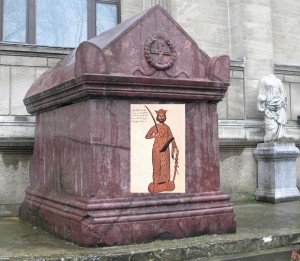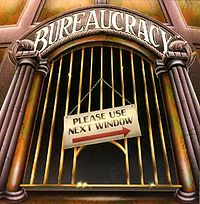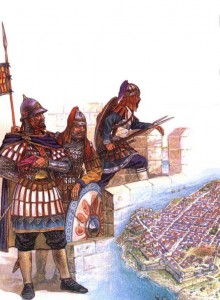Secrets from the Stacks
 Today I happened upon a copy of the Synopsis of Histories, an 11th century chronicle by the monk John Skylitzes. In it was the full inscription that the bishop of Melitene wrote on the sarcophagus of the great warrior-emperor Nicephorus Phocas. (Usually only the final line is given- a reference to Phocas’ wife Theophano who betrayed him) It’s quite a beautiful little poem, and judging from the end, was probably placed there several decades after the emperor’s grisly murder.
Today I happened upon a copy of the Synopsis of Histories, an 11th century chronicle by the monk John Skylitzes. In it was the full inscription that the bishop of Melitene wrote on the sarcophagus of the great warrior-emperor Nicephorus Phocas. (Usually only the final line is given- a reference to Phocas’ wife Theophano who betrayed him) It’s quite a beautiful little poem, and judging from the end, was probably placed there several decades after the emperor’s grisly murder.
There is a nice symmetry to the poem. It begins and ends with betrayal; in between it’s a kind of Byzantine Ozymandius- a wistful musing about greatness and the inevitable fate of man. Most striking to me is when the tone changes to one of agonized pleading; begging the great emperor to either rise from the dead or make room in his grave. It’s well worth the read. I give it here in its entirety:
“Who once sliced men more sharply than the sword
Is the victim of a woman and a glaive.
Who once retained the whole world in his power
Now small, is housed in but a yard of earth.
Whom once it seemed by wild beasts was revered
His wife has slain as though he were a sheep.
Who chose to sleep but little in the night
Now sleeps the lasting slumber of the tomb.
A bitter sight; good ruler, rouse yourself!
Take footmen, horsemen, archers to the fight,
The regiments and units of your host
For Russians, fully armed, assail our ports,
The scythes are anxious to be slaughtering
While every people does your city harm
Who once was frightened by your graven face
Before the gates of your Byzantium.
Do not ignore these things; cast off the stone
Which now detains you here and stone the beasts,
Repel the gentiles; give us built in stone
A firm foundation, solid and secure.
Or if you would not leave your tomb a while,
At least cry out from earth against the foe
For that alone might scatter them in flight.
If not, make room for us there in your tomb
For death, as you well know, is safety and
Salvation for th’entire Christian folk,
Nicephorus, who vanquished all but Eve.”



